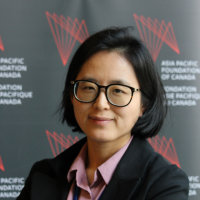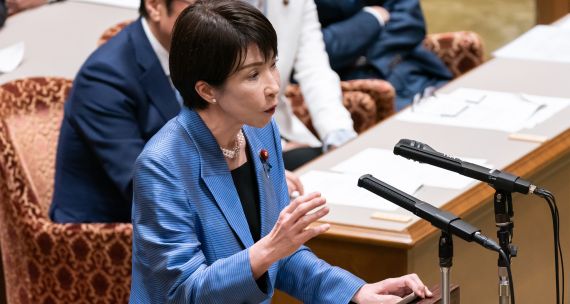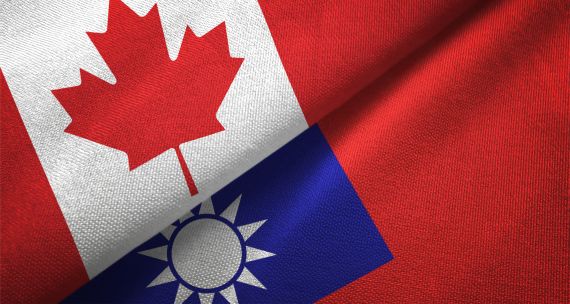On May 31, U.S. Secretary of Defense Pete Hegseth described the Indo-Pacific as the U.S.’s “priority theatre,” and highlighted the importance of like-minded states working together in the region to counter shared threats, especially China. Hegseth stressed that deterring China’s power projection, most notably toward Taiwan, would require a more distributed and collaborative division of roles and responsibilities among allies and partners. As part of its policy of “strategic flexibility,” the U.S. has begun to ask its allies not only to increase defence spending but to take more responsibility in deterring China. Taiwan may be a critical litmus test in this regard.
No state is more vital in this endeavour than Japan, a longstanding U.S. ally and host to the largest deployment of U.S. troops in the world. In recent years, Japan has moved in lockstep with the U.S., introducing new rhetoric and policy initiatives that signal a stronger commitment to Taiwan’s defence. However, effective deterrence also hinges on the co-operation of other key allies such as Australia, the Philippines, and South Korea. South Korea, home to the second-largest deployment of U.S. troops in the region, has taken a more reserved stance on Taiwan.
Washington’s growing expectations of its allies to do more vis-à-vis Taiwan present a strategic opening for Canada, which seeks to deepen its military and naval engagement in the region as part of its Indo-Pacific Strategy. Canada will need to closely track Japan and South Korea’s evolving policy initiatives and domestic debates over alliance burden-sharing, troop deployment changes, and command restructuring. This will help Canada identify where it can contribute most effectively and maximize Ottawa’s influence as a serious stakeholder and defender of the rules-based order in the Indo-Pacific.
Japan leads on Taiwan
Since 2021, Japan has stepped up its role as the U.S.’s leading ally in the Indo-Pacific, gradually increasing its commitment to peace and stability in the Taiwan Strait, as China’s posture towards Taiwan and its surrounding waters becomes more aggressive. One joint statement in particular, released in April 2021, was a watershed moment, marking the first time the U.S. and Japan publicly affirmed their commitment to peace in the Taiwan Strait. The missive demonstrated a noticeable shift in Japan’s rhetoric on Taiwan, and signalled policy alignment with the U.S. In its 2022 update of three core defence-related documents — the country’s National Security Strategy, its National Defense Strategy, and its Defense Buildup Program — Japan explicitly identified China as its greatest strategic challenge.
To match its rhetorical shift, Japan has also instituted new policies, such as enhancing force posture on the Nansei Islands, a critical chain of Japanese islands stretching from Japan to Taiwan across the East China Sea. In 2023, Japan established a new military base on Ishigaki and is planning to deploy electronic warfare units there by 2026, aiming to close the ‘readiness gap’ and strengthen deterrence near Taiwan. In September 2024, a destroyer from Japan’s Maritime Self-Defense Force (MSDF) conducted Japan’s first-ever transit through the Taiwan Strait, underscoring the country’s commitment to maintaining open international waterways and deterring Chinese aggression.
Domestically, Japan has reinforced defence integration with the U.S., including by establishing the first unified Joint Operations Command for its Self-Defense Forces in March 2025. This will further enable the U.S. and Japan to co-ordinate more closely on Taiwan-related operational planning, including joint contingency scenarios and missile deployments on Japan’s southwestern islands.
Tokyo has also proposed a “one-theatre” concept to the White House, which would integrate the East China Sea, South China Sea, and Korean Peninsula into a single operational theatre in wartime. This move would counter U.S. President Donald Trump’s perception of Japan as a free-rider and passive beneficiary, and instead position the country as a proactive and indispensable partner. By carefully avoiding alliance burden-sharing in the tariff negotiations, while making bold suggestions on how Japan can proactively assist the U.S. on Taiwan, Japan has signalled its intention to insulate security co-operation from bilateral trade tensions.
South Korea offers rhetorical support, but remains cautious
South Korea began to express support for Taiwan around the same time as Japan, issuing a joint statement in May 2021 with the U.S. This marked the first time a U.S.-South Korea joint statement referenced Taiwan since Seoul severed formal diplomatic ties with Taiwan in favour of Beijing in 1992. Taiwan was featured again as essential to regional security in South Korea’s 2022 Indo-Pacific strategy. The importance of the island was reaffirmed during the April 2023 U.S.-South Korea summit under former president Yoon Suk Yeol.
Unlike Japan, however, South Korea’s rhetorical shift has not translated into a meaningful policy shift. Despite joining the U.S. and Japan in repeatedly mentioning the importance of safeguarding the Taiwan Strait at U.S.-Japan-Korea trilateral summits in August 2023 and November 2024, Seoul remains circumspect. South Korea has not, for example, conducted publicly announced naval transits through the Taiwan Strait or unveiled concrete contingency planning in the case of a Taiwan conflict the way Japan has in recent months.
This stems from South Korea’s concern about provoking China. Seoul is wary of creating a 'dual-front situation,' wherein it would have to manage tensions with North Korea and China at the same time. In addition, Seoul is wary that a renewed U.S. focus on countering China in Taiwan might divert resources away from deterring North Korea, South Korea’s most pressing threat. Reports that the U.S. may consider withdrawing over 4,000 out of its 28,500 troops stationed in South Korea have only exacerbated South Korea’s anxiety. While the likelihood of a full-scale withdrawal of U.S. troops is remote in the near term, South Korea fears that any visible transfer of U.S. resources that prioritizes Taiwan might be seen as a sign of a weaker U.S.-South Korea alliance, emboldening Pyongyang. This is even more the case as newly elected South Korean president, Lee Jae-myung, campaigned on the return of wartime operational control. (Currently, the U.S. has authority over South Korean forces should war break out; if transferred to South Korea, the South Korean commander would gain new wartime decision-making powers, which is a move that might be interpreted as undermining alliance cohesion.)
An opportunity for ‘minilateralism’
Since 2022, Canada has become more vocal about the importance of maintaining stability in the Taiwan Strait and has emphasized in its Indo-Pacific Strategy the need to push back against actions threatening the status quo. Canada also has an economic interest in preserving stability across the Taiwan Strait; Canada’s newly established exports of liquefied natural gas (LNG) to Northeast Asia and its reliance on uninterrupted maritime trade routes make Taiwan’s security a matter of national concern.
As Canada holds the 2025 G7 presidency, it should continue issuing joint statements that condemn China’s provocations against Taiwan and start appealing for Taiwan’s participation in regional economic initiatives such as the Comprehensive and Progressive Agreement for Trans-Pacific Partnership (CPTPP). Canada could also draw more attention to its naval transits around Taiwan, in the process reminding regional partners and competitors alike of the country's hard-power presence in the Indo-Pacific.
With China’s intensifying military overtures and the U.S. eager to reshape its force posture in the region, Canada also has an opportunity to bolster its physical presence in the Taiwan Strait by working together with its Indo-Pacific partners, in particular Japan, along with Australia, South Korea, and the Philippines.
As the U.S. demands pre-commitments from allies in deterring China, these states — some of them members of regional security initiatives like the ‘Quad’, the ‘Squad,’ and AUKUS — are looking to intensify a collective security front on Taiwan. For example, the Philippines now formally supports Japan’s “one-theatre” proposal, which, with the recent signing of the two states’ groundbreaking reciprocal access agreement, signals a closer alignment between the Philippines and Japan.
Canada should join this growing minilateralism on Taiwan, beginning with more participation in the region’s joint military exercises. Similar to its upgraded role in the U.S. and Japan-led Keen Sword exercises, Canada could also seek active member status in additional multilateral naval drills and military exercises in the region such as Freedom Edge (in which Canada is not yet a participant) and Balikatan (in which Canada is an observer) to enhance interoperability and strengthen emergency response capabilities with like-minded partners. This would allow Canada to scale joint exercises as it has recently done with Australia, when it launched its largest-ever deployment of forces to participate in Australia’s main military exercise.
Canada can also consider negotiating a bilateral intelligence-sharing agreement with the Philippines as well as South Korea, as it has recently achieved with Japan. Canada could also establish a working group on Taiwan contingency planning with Japan and the Philippines — two states that have formulated such plans. Slowly normalizing joint naval activities, such as the resumption of joint drills in the Yellow Sea similar to the one in 2023, may be a starting point for Canada-South Korea collaboration.






